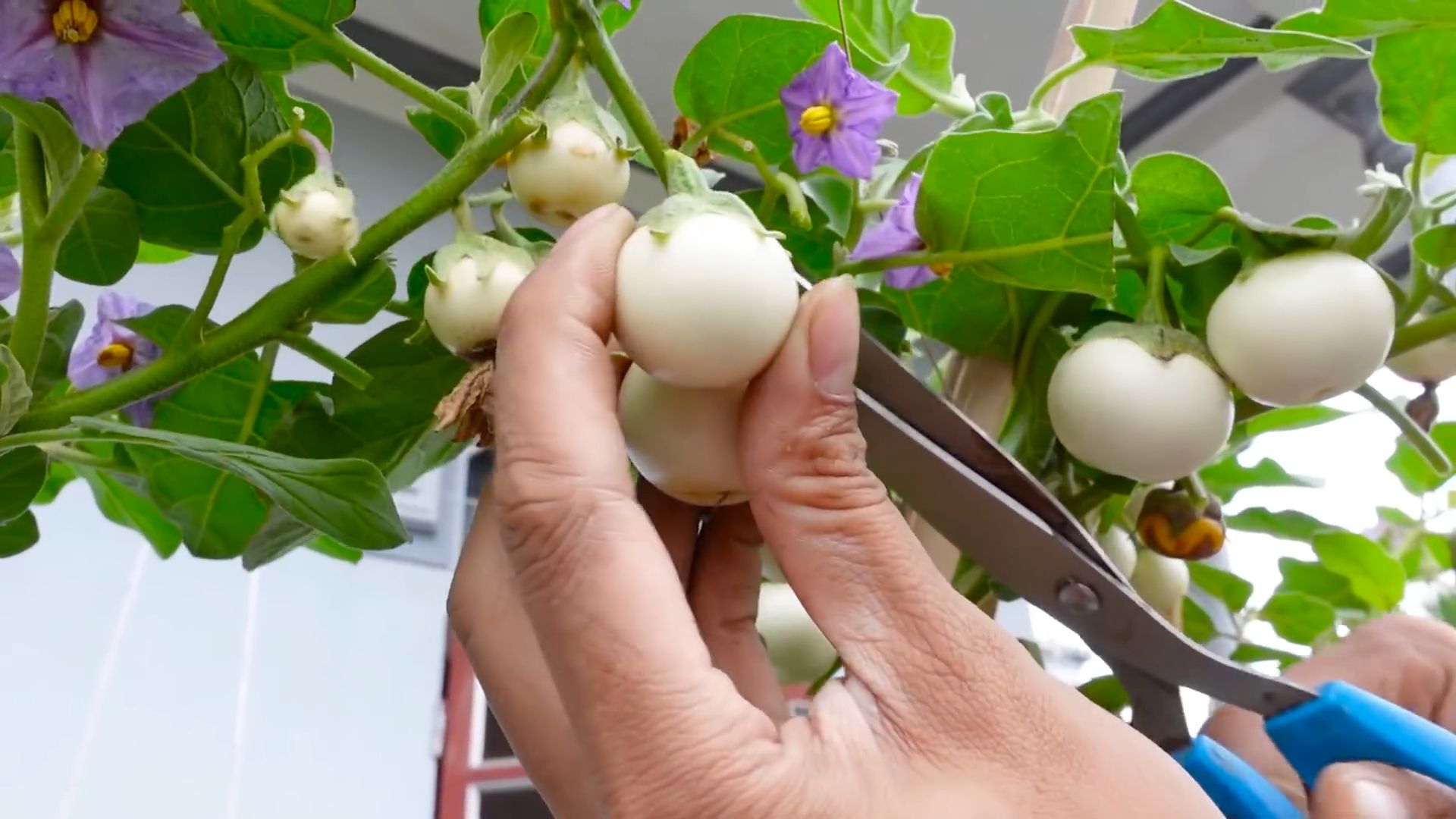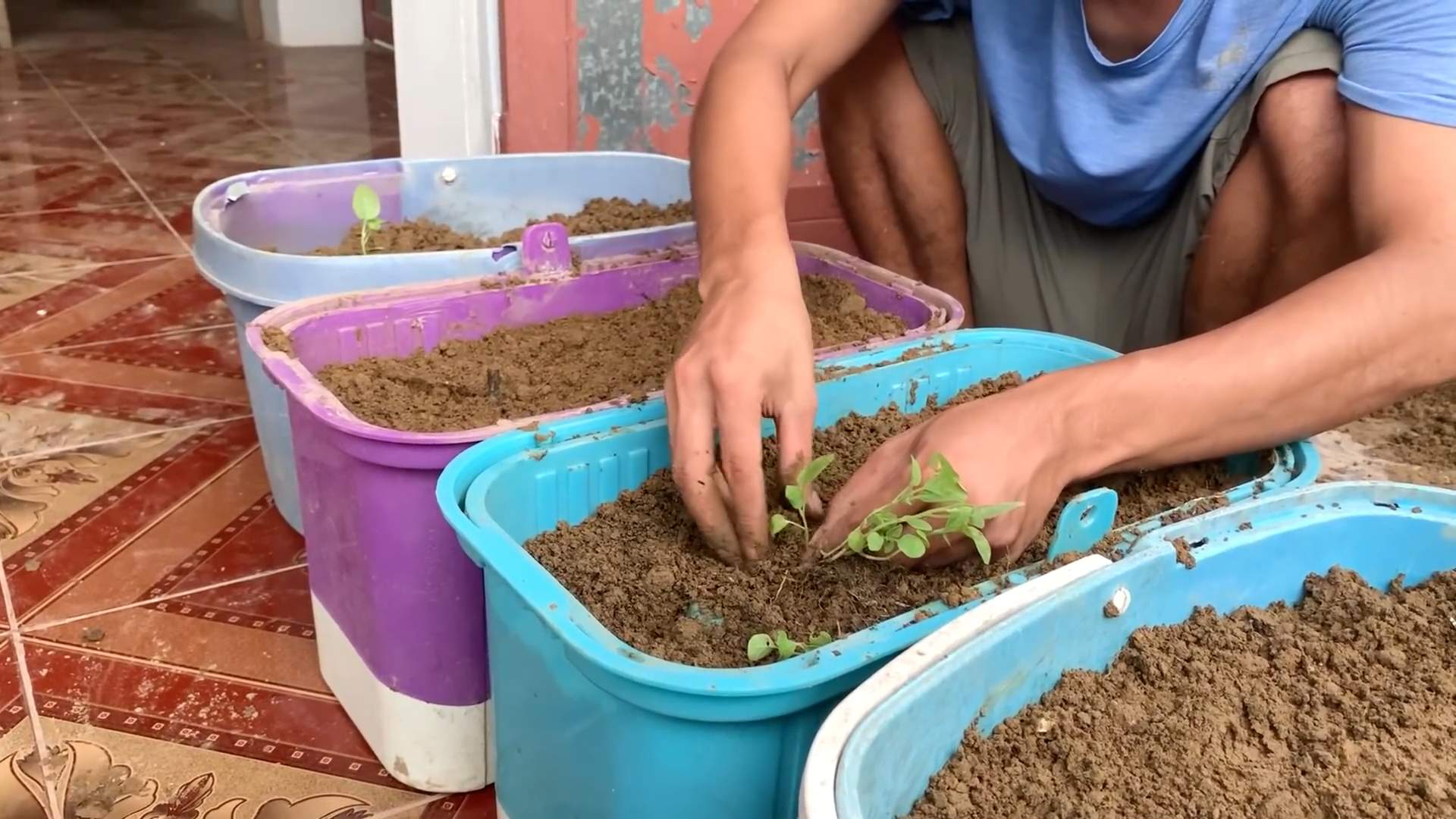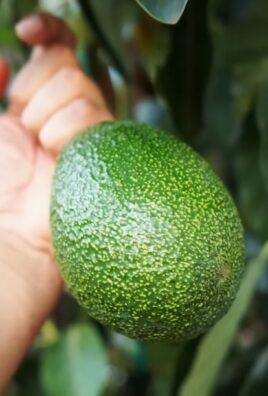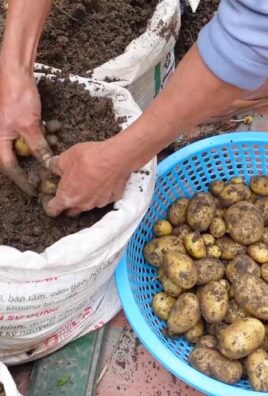Grow White Eggplant and unlock a world of culinary creativity right in your backyard! Have you ever seen those stunning, ivory-colored eggplants at a farmer’s market and wondered, “Could I actually grow that?” Well, I’m here to tell you, absolutely! This isn’t just about adding a unique vegetable to your garden; it’s about embracing a bit of gardening adventure and enjoying the fruits (or vegetables!) of your labor.
Eggplants, in general, have a rich history, tracing back to ancient Asia where they were cultivated for centuries. While the familiar purple varieties are commonplace, white eggplants offer a delightful twist, both in appearance and flavor. They tend to be milder and less bitter than their purple cousins, making them a fantastic addition to various dishes.
But why should you bother with this particular DIY gardening project? Because growing your own food is incredibly rewarding! Not only do you get to enjoy fresh, organic produce, but you also gain a deeper connection to nature. Plus, grow white eggplant is easier than you might think, especially with the right tips and tricks. In this article, I’ll share my favorite DIY hacks to help you cultivate these beautiful and delicious vegetables, even if you’re a beginner gardener. Get ready to impress your friends and family with your homegrown white eggplant – let’s get started!

Growing White Eggplant: A DIY Guide to a Unique Garden Treat
Okay, so you want to grow white eggplants? Awesome! They’re not only delicious but also add a really cool, almost ethereal touch to your garden. I’ve grown them myself, and let me tell you, it’s totally doable, even if you’re not a seasoned gardener. This guide will walk you through everything you need to know, from seed to harvest. Let’s get started!
Choosing Your White Eggplant Variety
First things first, you need to pick your variety. There are a few different types of white eggplants out there, each with its own unique characteristics. Here are a couple of my favorites:
* ‘Casper’: This is a classic white eggplant. It produces medium-sized, oval-shaped fruits with a mild flavor. It’s a reliable choice and generally easy to grow.
* ‘White Beauty’: As the name suggests, this variety is stunning! The fruits are smaller and rounder than ‘Casper,’ and they have a delicate, almost creamy texture.
* ‘Listada de Gandia’: Okay, this one isn’t *purely* white, but it’s a beautiful heirloom variety with white and lavender stripes. It’s a real showstopper in the garden and has a fantastic flavor.
Once you’ve chosen your variety, it’s time to get your seeds! You can find them online or at your local garden center.
Starting Your Seeds (or Buying Seedlings)
You have two options here: start your seeds indoors or buy seedlings from a nursery. Starting from seed gives you more control and is generally cheaper, but it requires a bit more time and effort. Buying seedlings is quicker and easier, but you’ll have less variety to choose from.
Starting Seeds Indoors:
This is what I usually do, because I like to get a head start on the growing season.
1. Timing is Key: Start your seeds about 6-8 weeks before the last expected frost in your area. Eggplants need warm weather to thrive, so you want to make sure they’re well-established before you transplant them outdoors.
2. Gather Your Supplies: You’ll need:
* Eggplant seeds
* Seed starting trays or small pots
* Seed starting mix (this is different from regular potting soil – it’s lighter and better for germination)
* A spray bottle
* A heat mat (optional, but it helps with germination)
* A grow light (also optional, but it prevents leggy seedlings)
3. Sow the Seeds: Fill your seed starting trays or pots with seed starting mix. Moisten the mix with your spray bottle – you want it damp, but not soggy. Sow the seeds about ¼ inch deep and gently cover them with more mix.
4. Provide Warmth and Light: Place your seed starting trays on a heat mat (if using) and under a grow light (if using). If you don’t have a heat mat, just make sure the trays are in a warm location, like near a radiator or in a sunny window. If you don’t have a grow light, place the trays in a south-facing window that gets plenty of sunlight.
5. Keep the Soil Moist: Check the soil moisture daily and mist with your spray bottle as needed to keep it damp. Don’t overwater, or the seeds could rot.
6. Be Patient: Eggplant seeds can take a week or two to germinate, so don’t get discouraged if you don’t see sprouts right away.
7. Thin the Seedlings: Once the seedlings have their first true leaves (the second set of leaves that appear after the initial seed leaves), thin them out so that only one seedling remains in each pot or cell.
8. Harden Off the Seedlings: About a week before you plan to transplant the seedlings outdoors, you’ll need to “harden them off.” This means gradually exposing them to outdoor conditions so they can adjust to the sun, wind, and temperature changes. Start by placing the seedlings outdoors in a sheltered location for an hour or two each day, gradually increasing the amount of time they spend outside.
Buying Seedlings:
If you’re buying seedlings, make sure to choose healthy-looking plants with sturdy stems and no signs of pests or diseases.
Preparing Your Garden Bed
Eggplants need a sunny spot with well-drained soil. They’re also heavy feeders, so you’ll want to amend your soil with plenty of organic matter before planting.
1. Choose a Sunny Location: Eggplants need at least 6-8 hours of sunlight per day.
2. Test Your Soil: A soil test will tell you the pH and nutrient levels of your soil. Eggplants prefer a slightly acidic soil with a pH of 6.0-6.8.
3. Amend Your Soil: If your soil is lacking in nutrients or organic matter, amend it with compost, aged manure, or other organic amendments. Work the amendments into the soil to a depth of at least 12 inches.
4. Ensure Good Drainage: Eggplants don’t like to sit in soggy soil, so make sure your garden bed has good drainage. If your soil is heavy clay, you can improve drainage by adding sand or perlite.
Transplanting Your Eggplant Seedlings
Once the danger of frost has passed and your seedlings are hardened off (or you’ve purchased your seedlings), it’s time to transplant them into your garden bed.
1. Choose a Cloudy Day: Transplanting on a cloudy day will help prevent the seedlings from getting stressed by the sun.
2. Dig Holes: Dig holes that are slightly larger than the root balls of your seedlings. Space the holes about 18-24 inches apart.
3. Gently Remove Seedlings: Carefully remove the seedlings from their pots or trays, being careful not to damage the roots.
4. Place Seedlings in Holes: Place the seedlings in the holes and gently backfill with soil.
5. Water Thoroughly: Water the seedlings thoroughly after planting.
6. Mulch: Apply a layer of mulch around the plants to help retain moisture, suppress weeds, and regulate soil temperature. I like to use straw or shredded leaves.
Caring for Your White Eggplants
Now that your eggplants are in the ground, it’s time to give them the care they need to thrive.
1. Water Regularly: Eggplants need consistent moisture, especially during hot, dry weather. Water deeply whenever the top inch of soil feels dry.
2. Fertilize: Feed your eggplants with a balanced fertilizer every 2-3 weeks. You can use a liquid fertilizer or a slow-release granular fertilizer.
3. Pest Control: Keep an eye out for common eggplant pests like aphids, flea beetles, and tomato hornworms. You can control these pests with insecticidal soap, neem oil, or by hand-picking them off the plants.
4. Support the Plants: As the eggplants grow, they may need support to prevent the branches from breaking under the weight of the fruit. You can use stakes, cages, or trellises to support the plants.
5. Pruning (Optional): Some gardeners like to prune their eggplants to improve air circulation and encourage fruit production. You can prune off suckers (small shoots that grow from the base of the plant) and any yellowing or damaged leaves.
Harvesting Your White Eggplants
The moment you’ve been waiting for! Harvesting your beautiful white eggplants.
1. Timing is Everything: White eggplants are typically ready to harvest about 60-80 days after transplanting. The fruits should be firm and have a glossy white skin. Don’t let them get too large, or they may become bitter.
2. Use a Sharp Knife: Use a sharp knife or pruning shears to cut the eggplants from the plant. Leave about an inch of stem attached to the fruit.
3. Handle with Care: White eggplants are delicate and can bruise easily, so handle them with care.
4. Store Properly: Store your harvested eggplants in the refrigerator for up to a week.
Enjoying Your Harvest
Now for the best part – eating your delicious white eggplants! They have a mild, slightly sweet flavor that’s perfect for grilling, roasting, stir-frying, or using in your favorite eggplant recipes. I love to slice them thinly and grill them with a little olive oil, salt, and pepper. They’re also fantastic in eggplant parmesan or baba ghanoush.
Growing white eggplants is a rewarding experience that will add a unique touch to your garden and your dinner table. With a little care and attention, you can enjoy a bountiful harvest of these beautiful and delicious fruits. Happy gardening!

Conclusion
So, there you have it! Growing white eggplant isn’t just about adding a unique vegetable to your garden; it’s about embracing a rewarding and surprisingly simple DIY project that yields delicious and visually stunning results. Forget the bland, mass-produced grocery store varieties. With a little patience and these straightforward steps, you can cultivate your own crop of creamy, mild-flavored white eggplants right in your backyard.
The beauty of this DIY trick lies in its accessibility. Whether you’re a seasoned gardener or a complete beginner, the process is manageable and adaptable to various garden sizes and climates. Imagine the satisfaction of harvesting your own organically grown white eggplants, knowing exactly where they came from and how they were nurtured. Think of the culinary possibilities – from elegant eggplant parmesan to delicate stir-fries, the unique flavor and texture of white eggplant will elevate your dishes to a whole new level.
But the benefits extend beyond the kitchen. Growing your own food is a deeply fulfilling experience, connecting you to nature and promoting a more sustainable lifestyle. Plus, white eggplants are simply beautiful to look at, adding a touch of elegance and intrigue to your garden landscape. They are a conversation starter, a testament to your green thumb, and a source of pride that you can share with friends and family.
Don’t be afraid to experiment with variations! Try growing different varieties of white eggplant, such as ‘Casper’ or ‘White Beauty,’ to discover your personal favorite. Consider companion planting with herbs like basil or rosemary to deter pests and enhance flavor. You can even try growing your white eggplants in containers if you have limited space. The possibilities are endless!
We wholeheartedly encourage you to give this DIY trick a try. It’s a fun, educational, and ultimately delicious way to enhance your gardening skills and enjoy the fruits (or rather, vegetables) of your labor. We are confident that you will be amazed by the results.
Once you’ve harvested your first crop of beautiful white eggplants, we’d love to hear about your experience! Share your tips, tricks, and culinary creations with us in the comments below. Let’s build a community of white eggplant enthusiasts and inspire others to embark on this rewarding gardening adventure. Happy growing!
Frequently Asked Questions (FAQ)
What makes white eggplant different from purple eggplant?
White eggplant differs from its purple counterpart primarily in color, flavor, and texture. While purple eggplants can sometimes have a slightly bitter taste, white eggplants are generally milder and sweeter. The texture of white eggplant is often described as creamier and less dense than purple eggplant. The skin is also typically thinner and more delicate. Nutritionally, the differences are minimal, with both varieties offering similar vitamins and minerals. However, the lower anthocyanin content (the pigment that gives purple eggplant its color) in white eggplant might make it a better choice for individuals sensitive to these compounds.
Is it more difficult to grow white eggplant compared to purple eggplant?
No, growing white eggplant is generally not more difficult than growing purple eggplant. The cultivation requirements are essentially the same. Both varieties need warm temperatures, plenty of sunlight (at least 6-8 hours per day), well-drained soil, and consistent watering. The key is to provide the right growing conditions and protect the plants from pests and diseases. Some gardeners even find white eggplant slightly easier to grow, as the lighter color can make it easier to spot pests early on.
What are some common problems when growing white eggplant, and how can I prevent them?
Common problems include pests like flea beetles, aphids, and spider mites, as well as diseases like blossom-end rot and fungal infections. To prevent these issues:
* Pest Control: Regularly inspect your plants for pests. Use organic pest control methods like insecticidal soap, neem oil, or introducing beneficial insects like ladybugs. Row covers can also protect young plants from pests.
* Blossom-End Rot: This is caused by calcium deficiency, often due to inconsistent watering. Ensure consistent watering, especially during fruit development. You can also amend the soil with calcium-rich amendments like bone meal or crushed eggshells.
* Fungal Infections: Provide good air circulation around the plants by spacing them adequately. Avoid overhead watering, which can promote fungal growth. Use a fungicide if necessary, following the product instructions carefully.
How do I know when my white eggplants are ripe and ready to harvest?
White eggplants are typically ready to harvest when they reach their mature size (depending on the variety) and the skin is smooth, glossy, and slightly yielding to the touch. Avoid letting them become too large or overripe, as this can lead to a bitter taste and tough texture. The skin should be a consistent white color, without any blemishes or discoloration. A good test is to gently press the skin with your thumb; if it leaves a slight indentation, it’s likely ripe.
Can I grow white eggplant in containers?
Yes, you can successfully grow white eggplant in containers, which is ideal for those with limited garden space. Choose a large container (at least 5 gallons) with good drainage. Use a high-quality potting mix and ensure the container receives plenty of sunlight. Water regularly and fertilize every 2-3 weeks with a balanced fertilizer. Container-grown eggplants may require more frequent watering and fertilization than those grown in the ground.
What are some good companion plants for white eggplant?
Companion planting can help deter pests, attract beneficial insects, and improve the overall health of your white eggplant plants. Good companion plants include:
* Basil: Repels pests like aphids and whiteflies.
* Rosemary: Deters flea beetles and other pests.
* Marigolds: Repel nematodes and other soil pests.
* Thyme: Attracts beneficial insects like hoverflies.
* Beans: Fix nitrogen in the soil, benefiting the eggplant.
How should I store harvested white eggplants?
Store harvested white eggplants in the refrigerator in a plastic bag or container. They will typically last for about a week. Avoid storing them near ethylene-producing fruits like apples or bananas, as this can cause them to ripen too quickly. For longer storage, you can freeze cooked eggplant or pickle it.
Are there different varieties of white eggplant? Which one should I choose?
Yes, there are several varieties of white eggplant available, each with slightly different characteristics. Some popular varieties include:
* Casper: A popular variety known for its mild flavor and creamy texture.
* White Beauty: A classic white eggplant with a slightly sweet taste.
* Gretel: A smaller, more compact variety that is well-suited for container gardening.
* Listada de Gandia: A beautiful striped variety with white and purple skin.
The best variety for you will depend on your personal preferences and growing conditions. Consider factors like size, flavor, and disease resistance when making your choice.
Can I save seeds from my white eggplants to plant next year?
Yes, you can save seeds from your white eggplants, but keep in mind that eggplant is self-pollinating but can be cross-pollinated by other eggplant varieties. To ensure true-to-type seeds, isolate your white eggplant plants from other eggplant varieties. Allow the fruit to fully ripen on the plant until it becomes overripe and the skin turns yellow or brown. Scoop out the seeds, rinse them thoroughly, and dry them completely before storing them in an airtight container in a cool, dark place.
What are some delicious ways to cook with white eggplant?
White eggplant is incredibly versatile and can be used in a variety of dishes. Some popular ways to cook with it include:
* Eggplant Parmesan: A classic Italian dish that showcases the creamy texture of white eggplant.
* Stir-Fries: White eggplant adds a mild and slightly sweet flavor to stir-fries.
* Grilled Eggplant: Grilling brings out the smoky flavor of white eggplant.
* Roasted Eggplant: Roasting enhances the sweetness and tenderness of white eggplant.
* Baba Ghanoush: A Middle Eastern dip made with roasted eggplant, tahini, lemon juice, and garlic.
* Eggplant Curry: White eggplant pairs well with various curry spices.
Experiment with different recipes and find your favorite way to enjoy this delicious and unique vegetable!





Leave a Comment